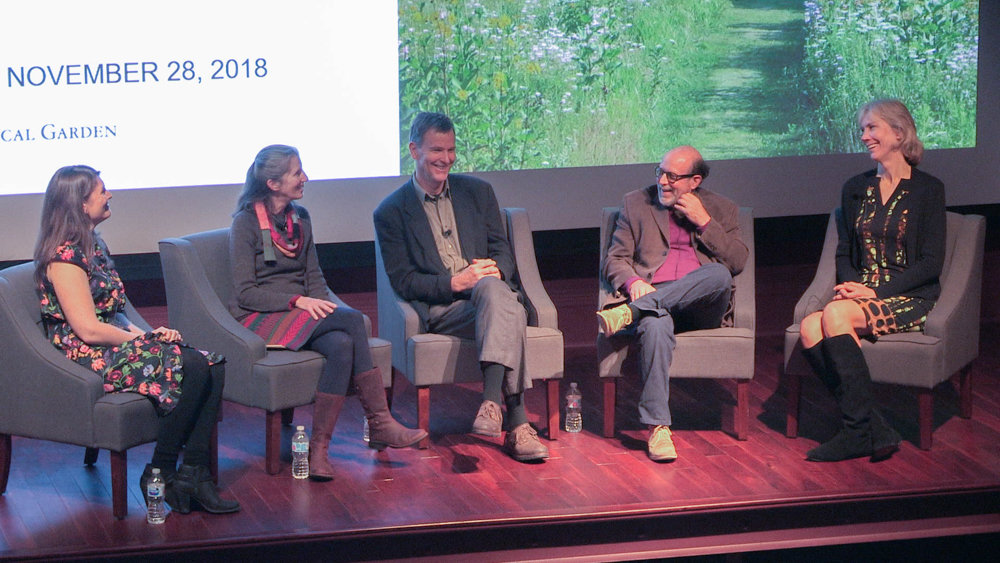It’s amazing what happens when nature is a priority
A few weeks ago, I was seated, once again, in the Ross Auditorium at the New York Botanical Garden. The program this time was devoted to sustainability as it pertains to our own personal gardens, as well as meadows and woodland environments.
Anyone can be kept abreast of exciting doings at the botanical garden by visiting the adult education page at NYBG.org and clicking on the newsletter sign-up.
There were three speakers that morning, but an intense buzz of excitement could be felt throughout the audience as the third speaker approached the podium. Susan Leopold Freeman, granddaughter of Aldo Leopold — considered to be the father of wildlife ecology and management as well as the American wilderness system — addressed us.
Always attracted to the outdoors, Aldo studied at the Yale Forestry School and then worked in the U.S. Forestry Service in Arizona and New Mexico. He developed the first comprehensive management plan for the Grand Canyon, and wrote the first game and fish handbook in 1933.
Aldo came to recognize the ecological need for an alpha predator to maintain the ecological health of all animals within an area. He proposed what became the first official wilderness area in 1924 — the Gila National Forest. In 1980, the Aldo Leopold Wilderness Area within the Gila National Forest was named in his honor.
His most famous project perhaps was the purchase and restoration of an 80-acre worn-out farm in the central plain area of Wisconsin along the Wisconsin River near Baraboo. This V-shaped area of 13,000 square miles is composed of a sandy plain generally at 700 to 800 feet above sea level. Originally forested, much of this area had been destroyed by logging, fires and subsequent overgrazing by dairy cows.
Aldo and his family spent years reforesting the land into today’s landscape of conifers, hardwoods and prairie, providing suitable habitat for a renewed wildlife population.
Aldo Leopold’s most popular and influential writings can be found in “A Sand County Almanac.” Published shortly after his death, it includes previously written articles as well as new material tied to his experiences in reclaiming the land of his purchased farm. His famous “land ethic” states, “A thing is right when it tends to preserve the integrity, stability and beauty of the biotic community. It is wrong when it tends otherwise.”
He also believed that “contact with the natural world was crucial in shaping our ability to extend our ethics beyond our own self-interest.”
About 15 minutes northeast of Baraboo is the Aldo Leopold Legacy Center with tours and trails as well as an ecologically sustainable building with a net-zero carbon footprint.
Not aware of this heritage, I did not initially realize how much Susan Leopold Freeman’s family project would resemble her grandfather’s legacy. In 2004, Susan and her biologist husband Scott Freeman — who teaches at the University of Washington — bought 18 acres of degraded land along the 7.5-mile Tarboo Creek on Washington’s Olympic peninsula in conjunction with the Northwest Watershed and Jefferson Land Trust.
Susan and Scott had met at the Leopold Memorial Reserve in Wisconsin and had dreamed of doing their own project in restoration ecology. Already present was a Tarboo Creek community, which was trying to restore the waterway with the further hope of inducing spawning salmon to return.
Tarboo Creek had been subjected to many indignities. Parts of it had been channelized, and the gushing water dug out a deep streambed. The surrounding wetlands had been drained and culverts had been installed in various places.
Culverts create two problems. If there is heavy rainfall, the amount of water gushing through is too strong for the salmon to swim upstream. A poorly placed culvert can create a waterfall underneath its mouth, which may become too high for the fish to jump.
In addition, the surrounding plain was denuded of its tall tree cover and covered with invasive weeds, Himalayan and Eurasian blackberry plants armed with thorns and reed canary grass.
While the culverts had been removed before the Freemans arrival, the stream had to be rebuilt, or “re-meandered.” An excavator re-dug the creek into numerous sinuous curves. Since female salmon lay their eggs in nests that they excavate in gravel, the bottom of the stream was filled three to four inches deep with gravel.
The banks were stabilized with netting and replanted with tree seedlings.
Now the seedlings are trees, and the salmon have returned!
The details of this project can be found in a charming book by Scott Freeman, “Saving Tarboo Creek.” In many ways this project is a love story. It is about love for the land and love for those who understand humanity’s place as members, not rulers, of a natural community.
Have a thought or comment for Sura Jeselsohn? Email her at greenscenesura@gmail.com.






